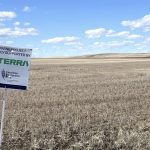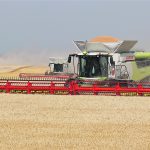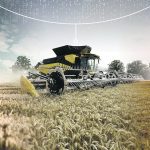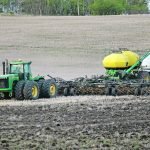In the summer of 1859, a British astronomer was investigating what looked like a group of dark specks on the sun when there was a blast of light. The flare he saw lasted five minutes. The effects lasted for two days. Telegraph systems failed so spectacularly that operators got electrical shocks from their machines. Paper […] Read more
 Crop Management
Crop Management

Gene-edited wheat tested
SASKATOON — Agriculture Canada has planted its first research plots of gene-edited wheat. The experimental wheat is being grown in a small field trial at the Lethbridge Research and Development Centre. Related stories: The goal is to produce spring wheat lines with greater ability to receive and use sunlight, according to an Alberta Farmer Express article. A […] Read more

Microbiome revolution proposed
WINNIPEG — The hyperbole around biologicals and what they can do for crop production sounds like 10 million crickets in a suburban backyard. There’s a lot of noise around biologicals, and for good reason. Soil contains millions of bacteria, fungi and other microbes that perform vital functions for plants. As a result, global agri-science firms […] Read more

Canadian durum looks good but troubles lurk elsewhere
All eyes are on crop conditions in Turkey, which has turned into a powerhouse recently in the global durum market
SASKATOON — Canada’s durum crop is off to a good start, but there are problems in many other regions, says an analyst. Farmers in southwestern Saskatchewan and southeastern Alberta received much-needed rainfall this spring. Related stories: “They think this is the best start they’ve had in five or six years,” said Neil Townsend, chief analyst […] Read more

Viterra helps aid charity
Viterra is supporting Canadian Foodgrains Bank again this year by providing 267 acres of land around five of its terminals in Alberta and Saskatchewan. The land will be used by farmers who volunteer their time, expertise and resources to grow crops as part of a community-led growing project or as an addition to their own […] Read more

Seeding research may not apply to all regions
Recent Sask. study suggests benefits from lower wheat seeding rates for low moisture, but that might not transfer to Man.
Recent research from Saskatchewan suggests farmers might want to hold back on their wheat seeding rate if they’re expecting a dry year, but it’s not clear how well the insight translates to Manitoba. The Western Applied Research Corporation study found that with a dry season on the horizon, a mid-to-low wheat seeding rate achieved the […] Read more
Keep It Clean urges caution with product use
Glacier FarmMedia – It’s nearly impossible for farmers to stay on top of the varied regulations set by various countries where their grain may be destined. Fortunately, Canadian farmers have an easy-to-follow tool to help them navigate these murky waters. “What we produce here in Canada far exceeds our domestic demand, so we need to […] Read more

FieldOps combines all field operations into one interface
CNH is set to debut a new, free platform for mobile and web customers to better monitor field operations from a single site. “This is something we’re really excited about,” said Marc Kermish, the company’s chief digital and information officer. Related story: Improved connectivity coming soon from CNH “We realize more and more farmers are […] Read more

Improved connectivity coming soon from CNH
Satellite link to debut next year for New Holland and Case IH brands, but is not meant to replace cellular communication
As real-time digital connectivity from the field to the cloud increases in importance for farmers with the move to widespread precision farming, regular cellular service providers haven’t really been fully up to the task of supporting it in every location. Most farmers have fields in at least some areas where cellular service is reduced or […] Read more
ESN use increases, thanks to federal subsidy
WINNIPEG — Environmentally Smart Nitrogen has been around for about two decades. Twenty years is a long time, so it’s easy to forget why Canadian farmers initially bought and used the polymer-coated fertilizer. In the early 2000s, few people talked about greenhouse gas emissions from cropland, but farmers were concerned about something else. “Probably the […] Read more



 Crop Management
Crop Management


